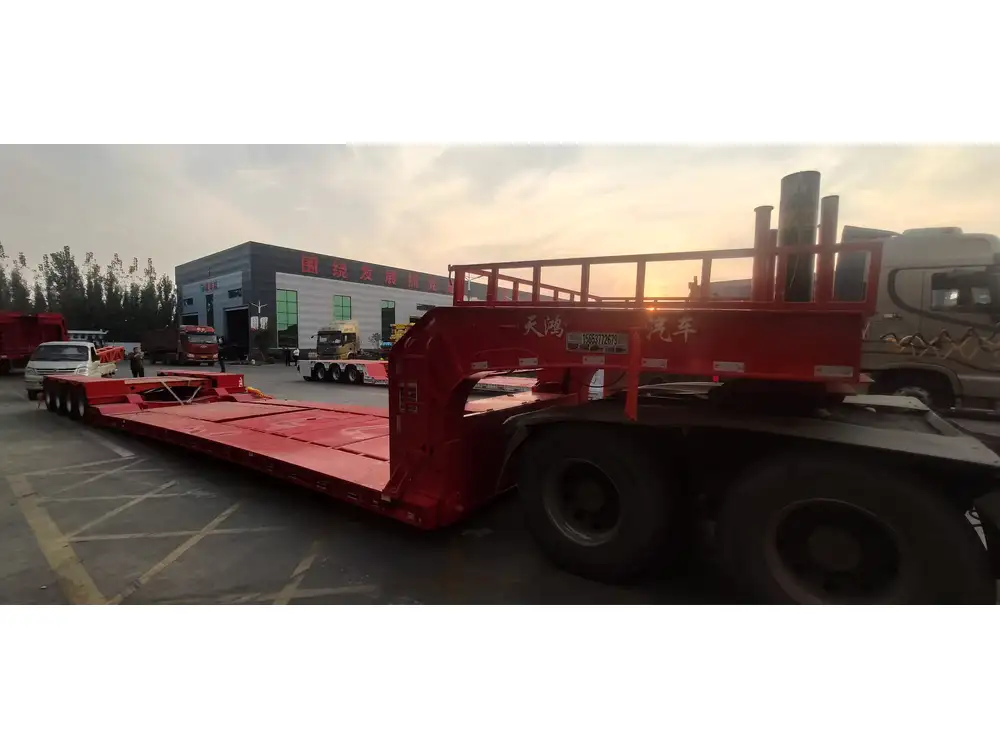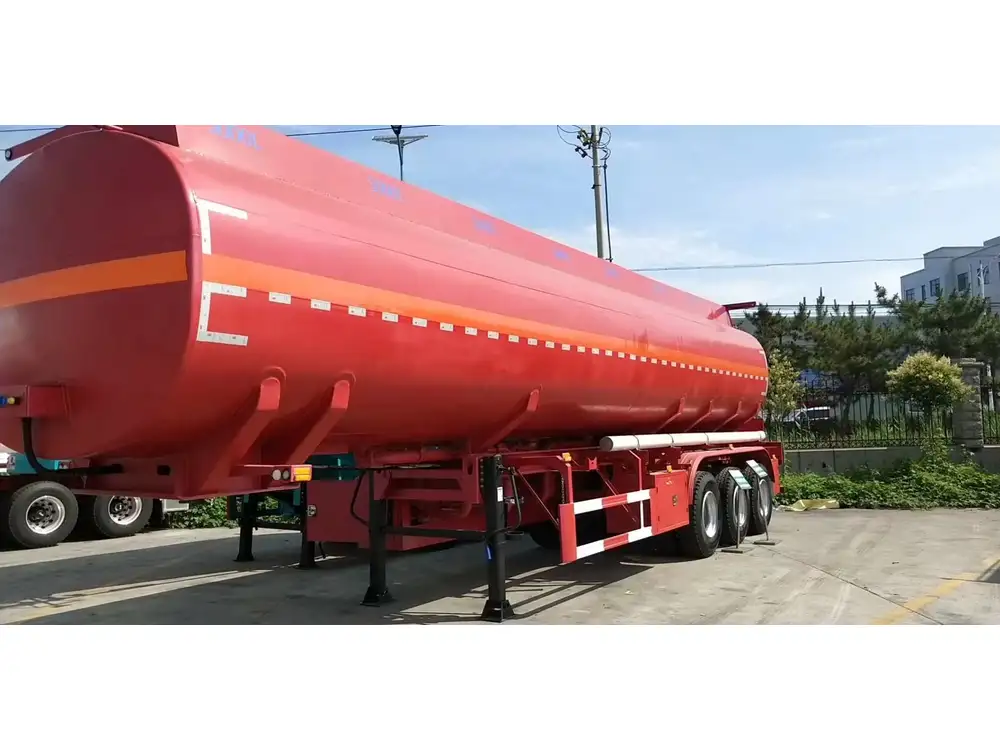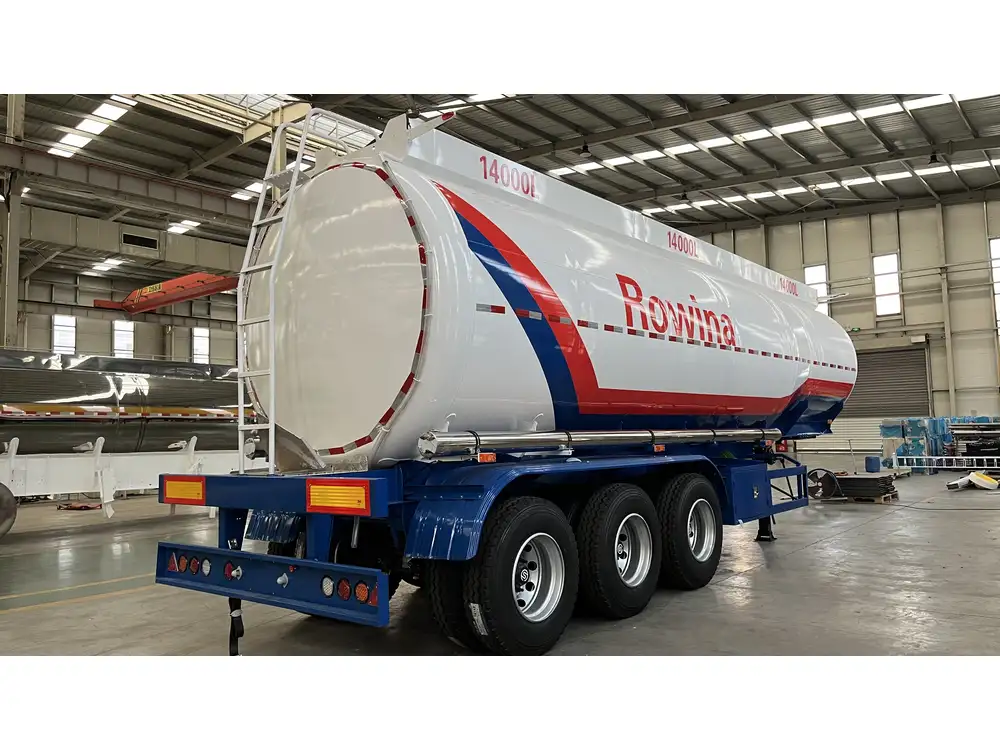Table of Contents
- What is a Semi-Trailer?
- Standard Semi-Trailer Lengths
- Importance of Semi-Trailer Length
- Types of Semi-Trailers Based on Length
- Legal Regulations on Semi-Trailer Length
- Factors Affecting Semi-Trailer Length Selection
- Comparative Analysis of Semi-Trailer Lengths
- Tips for Choosing the Right Semi-Trailer Length
- Conclusion
What is a Semi-Trailer?
A semi-trailer is a type of trailer designed to be attached to a truck tractor, characterized primarily by its inability to stand alone. Its front end is supported by a fifth wheel connection to the truck, while the rear typically carries cargo. Semi-trailers are pivotal in the transportation industry, facilitating the movement of various goods across diverse distances with efficiency. Understanding semi-trailer specifications, especially length, is crucial for fleet operators, dispatchers, and logistics managers to ensure optimal cargo transport.

Standard Semi-Trailer Lengths
The length of a semi-trailer can vary significantly based on its design and intended use. Below are some standard lengths commonly accepted in the industry:
| Semi-Trailer Type | Common Lengths | Description |
|---|---|---|
| Flatbed Trailers | 48 to 53 feet | Suitable for transporting oversized goods |
| Reefer Trailers | 48 to 53 feet | Insulated for temperature-sensitive products |
| Dry Van Trailers | 48 to 53 feet | Enclosed trailers for general freight |
| Lowboy Trailers | 48 to 50 feet | Designed for heavy equipment transport |
| Double Trailers | 28 feet (each trailer) | Typically used for regional shipping |
| Container Trailers | 20, 40, or 45 feet | For transporting intermodal containers |
The most common semi-trailer lengths in highway applications are 53 feet, which maximizes cargo space while adhering to regulatory constraints.
Importance of Semi-Trailer Length
Understanding semi-trailer lengths is not merely an operational detail; it can significantly impact:
- Load Capacity: A longer semi-trailer can carry more cargo, which can lead to increased profits for transportation companies.
- Fuel Efficiency: Trailer length can affect drag. A well-sized trailer can enhance fuel efficiency, lowering operational costs.
- Legal Compliance: Different states and countries impose regulations on maximum trailer lengths. Compliance is crucial to avoid fines and penalties.
- Maneuverability: Longer trailers may require more space for turns and can be challenging in urban environments.
Types of Semi-Trailers Based on Length
The semi-trailer landscape is incredibly diverse, with each type catering to specific cargo requirements and operational needs. Below are various types differentiated primarily by length and function:
Standard Semi-Trailers (48 and 53 Feet)
- Versatile and widely used for general freight.
- Ideal for transporting packaged goods, furniture, and other less specialized cargo.
Shorter Trailers (Less than 48 Feet)
- Commonly used in urban areas with concentrated freight density.
- Allow for better maneuverability in tight spaces.
Longer Trailers (Over 53 Feet)
- Often used in industries like construction, where oversized loads are necessary.
- Subject to more stringent regulations regarding weight and permit requirements.
Multi-Trailer Configurations
- Used in specific freight systems involving double or triple trailers.
- These configurations can increase overall cargo capacity but may face restrictions in certain regions.

Legal Regulations on Semi-Trailer Length
Across the globe, semi-trailer lengths are subject to rigorous governmental regulations aimed at maintaining safety on public roads. Here’s an overview by region:
United States
- Federal Law: Under federal regulations, the maximum length for a semi-trailer without special permits is typically set at 53 feet. States may have their specific restrictions but cannot exceed federal guidelines.
Canada
- Provincial Regulations: Lengths can vary province to province; however, usual limits range from 53 to 60 feet, contingent on provincial permits.

Europe
- Length Regulations: The EU generally allows a maximum articulated vehicle length of 16.5 meters (approximately 54 feet), but certain exemptions apply.
Staying informed about local laws is crucial to ensure compliance and avoid penalties that can arise from carrying oversized loads.
Factors Affecting Semi-Trailer Length Selection
Choosing the right semi-trailer length involves several considerations:
Type of Cargo
- Heavy equipment may require specialized lowboy trailers.
- Ensure that the trailer can accommodate the dimensions and weight of the cargo being transported.
Route Considerations
- Urban vs. rural routes: Urban routes may favor shorter trailers for maneuverability, while rural routes can accommodate longer units.
Weight Regulations
- Examine weight distribution rules; certain lengths may require additional permits when carrying heavier loads.
Operational Efficiency
- Longer trailers can improve load efficiency, potentially reducing the number of trips needed, thereby saving time and fuel.
Fleet Compatibility
- Evaluate the existing fleet configuration to ensure that newly acquired semi-trailers complement current operations without inefficient overlaps.
Comparative Analysis of Semi-Trailer Lengths
When considering various lengths of semi-trailers, one must weigh the pros and cons effectively. The following table provides a succinct comparative analysis:
| Semi-Trailer Length | Advantages | Disadvantages |
|---|---|---|
| 48 Feet | Easier in urban settings; adaptable | Less cargo capacity compared to longer options |
| 53 Feet | Maximizes payload capacity; highly versatile | Requires more space for maneuvering |
| Longer (54+ Feet) | Ideal for heavy-duty applications; more payload | Stricter regulations and higher permit needs |
| Shorter (Less than 48 Feet) | Enhanced maneuverability; suitable for tight spaces | Limited cargo capacity; may require more trips |
Understanding these dynamics can significantly hone decision-making in selecting the appropriate trailer length for specific operational requirements.

Tips for Choosing the Right Semi-Trailer Length
When navigating the world of semi-trailers, several tips can streamline your decision-making process:
Evaluate Your Cargo Needs: Always measure and consider the type of goods you plan to transport.
Plan Your Routes: Analyze the types of routes you’ll navigate, including considerations for urban settings where space may be limited.
Understand Weight Restrictions: Stay updated on local weight limits and how they interact with semi-trailer lengths.
Consult with Experts: Engage logistics professionals or consultants who specialize in transportation to make informed decisions.
Future-Proof Your Fleet: Select lengths that can accommodate potential growth in the types of loads you might handle in the future.
Conclusion
In conclusion, understanding semi-trailer lengths is paramount for efficient transportation and logistics management. From adhering to legal standards to optimizing payload capacity and enhancing maneuverability, the nuances of trailer length selection play a crucial role in operational success. As a manufacturer of semi-trailers, we emphasize the importance of detailed knowledge and strategic decision-making targeted at meeting diverse transportation needs. By considering the factors outlined above, freight companies can make informed choices, ultimately driving productivity and maintaining regulatory compliance. As they navigate the intricacies of transportation, the right semi-trailer can be the linchpin for operational excellence.



